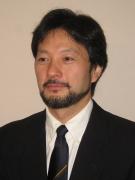Research Experience
-
2023.04-Now
National Institute for Materials Science Research Center for Electronic and Optical Materials Optical Ceramics Group Group Leader
-
2016.04-2023.03
National Institute for Materials Science Research Center for Functional Materials, Ceramics Processing Group Group Leader
-
2012.04-2016.03
National Institute for Materials Science Materials Processing Unit, Advanced Ceramics Group Chief Researcher
-
2002.04-2012.03
National Institute for Materials Science Materials Engineering Laboratory, Fine Particle Processing Group Senior Researcher
-
1996.04-2002.03
科学技術庁金属材料技術研究所 研究員
-
1995.04-1996.03
Waseda University Kagami Memorial Research Institute for Materials Science and Technology
-
1994.04-1995.03
Waseda University School of Science and Engineering


Click to view the Scopus page. The data was downloaded from Scopus API in December 05, 2025, via http://api.elsevier.com and http://www.scopus.com .